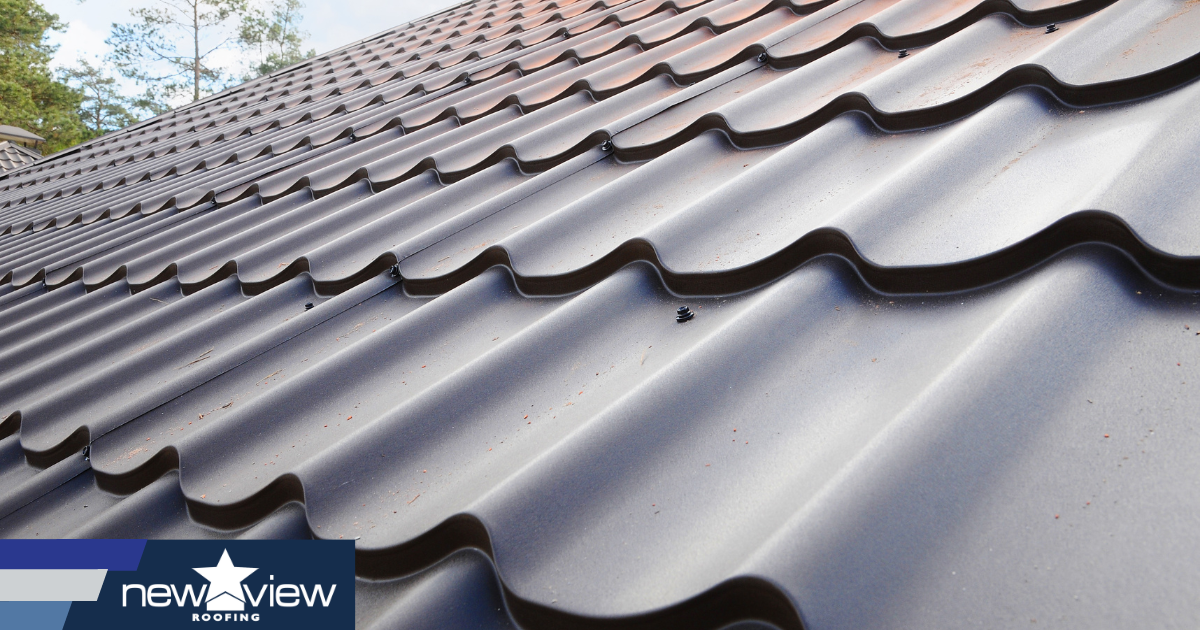A Comprehensive Consider Roofing Companies Gainesville Residents Recommend
Wiki Article
Best Practices for Ensuring Proper Roofing Air Flow
Making certain correct roof covering air flow is critical for the long life and effectiveness of a roofing system. A well balanced intake and exhaust air vent ratio, typically 1:300, plays a pivotal function, with consumption vents ideally positioned at the lower side of the roofing for awesome air access and exhaust vents at the height for cozy air exit. Routine evaluations to determine blockages and preserve clear airflow are extremely important. Moreover, maintaining insulation far from vents is vital to stop air flow constraint. Comprehending these foundational components sets the stage for more thorough insights into installment and maintenance methods that can dramatically enhance your roof's efficiency.Understand Ventilation Essentials
Effectively comprehending ventilation essentials is essential for making certain the durability and performance of roof covering systems. Efficient ventilation alleviates dampness buildup and temperature extremes in the attic, both of which can cause substantial architectural damages gradually. A well-ventilated roof helps in avoiding common issues such as mold growth, timber rot, and ice dams, which can compromise the integrity of the roofing products and the underlying structures.The main goal of air flow is to promote the activity of air, enabling a constant exchange between the indoor and outside settings. This balance is accomplished with a mix of consumption and exhaust vents that collaborate to keep optimal air movement. Intake vents, generally located along the eaves or soffits, permit fresh air to get in the attic room, while exhaust vents, typically located at or near the roof ridge, make it possible for warm, damp air to leave.
Trick aspects influencing the effectiveness of roofing ventilation consist of proper placement, adequate sizing, and making certain that both intake and exhaust vents are unobstructed. Normal inspection and maintenance are important to determine potential clogs, damages, or inadequacies in the ventilation system, consequently securing the roof's performance and resilience.
Kinds Of Roofing System Vents
Roofing vents play an important function in keeping effective attic ventilation and, by expansion, the total health and wellness of the roof system. Various kinds of roof covering vents are offered, each with unique advantages customized to specific roof needs. Ridge vents, as an example, are mounted along the roof's peak, allowing warm, humid air to escape from the attic room. They supply constant ventilation and mix perfectly with the roofline, making them both efficient and aesthetically pleasing.
Soffit vents are set up under the eaves and operate in tandem with roofing system vents to guarantee a well balanced consumption and exhaust system. By permitting cooler air to go into from below, soffit vents assist in the expulsion of hot air with upper vents. Gable vents, located on the outside wall surfaces of the attic room, offer another efficient service, particularly in homes with saddleback roofs.
Assess Your Present Ventilation

Following, think about the age and problem of your roof covering materials and air flow components. Older systems might not follow present building regulations or might have worn away gradually, reducing their effectiveness. Conduct a thorough exam to recognize any indications of damage, such as corrosion, damages, or spaces that might compromise the system's performance.
Additionally, gauge the attic temperature level and humidity degrees. Heats and humidity can suggest inadequate ventilation - roofing companies. Utilize a hygrometer and thermostat to acquire exact readings, comparing them with outdoor problems. Consistent inconsistencies suggest potential problems that need dealing with.
Installation Best Practices
Effective installment of roofing ventilation systems is extremely important for making certain optimal efficiency and durability. Appropriate installment starts with recognizing the specific air flow requirements of the building and the roofing system it covers. This involves determining the proper ratio of consumption to exhaust vents, typically sticking to the 1:300 guideline, which stipulates one square foot of air flow for each 300 square feet of attic flooring space.
The positioning of vents is similarly critical. Consumption vents need to be installed at the roofing system's lower edge, usually in the soffits, to enable amazing air to enter. Exhaust vents, on the other hand, must be installed near or at the roof covering's optimal to facilitate the exit of cozy, damp air. This creates an all-natural air flow that aids keep temperature level and dampness balance within the attic room space.
Seal all vent connections meticulously to stop air leakages and prospective water infiltration. Usage high-quality materials and adhere to maker standards to guarantee durability and efficiency. Additionally, integrating ridge vents with baffles can significantly improve air flow performance by stopping wind-driven rain and snow from entering the attic.
Eventually, accurate installation of roof covering ventilation systems minimizes potential issues such as mold and mildew news development, ice dams, and architectural damage, making certain the roof covering's honesty and the structure's total health and wellness.
Routine Maintenance Tips
Uniformity in upkeep methods is basic to ensuring the long-lasting effectiveness of roof covering air flow systems. Throughout these evaluations, guarantee that vents are cost-free of particles, nests, and various other blockages that might hinder try these out airflow.
Utilize a soft brush or a vacuum to get rid of dust and debris from intake and exhaust vents. Be careful not to damage the air vent displays or louvers during the procedure.
Appropriate insulation is similarly essential. Make sure that attic room insulation does not obstruct the vents, as this can significantly limit air movement. Rearrange or change it to preserve an efficient barrier. if any insulation has actually changed or cleared up.
Finally, change any type of damaged or missing out on components without delay. Damaged vents, cracked roof shingles, or deteriorated flashing can all contribute to insufficient air flow and needs to be addressed immediately. Routine maintenance makes certain that the roofing air flow system functions efficiently, thus prolonging the life-span of the roofing itself.
Final Thought
Making sure correct roof covering ventilation is vital for preserving the efficiency and longevity of a roofing system. Adherence to the 1:300 consumption and exhaust vent proportion, combined with the strategic placement of vents, is essential. Routine semiannual check my reference assessments, debris cleansing, and making certain insulation does not block airflow are critical methods. Applying these best practices will foster a well-ventilated roof system, thereby mitigating possible issues associated with moisture buildup and too much warmth, eventually lengthening the roof's life-span.A balanced consumption and exhaust air vent ratio, frequently 1:300, plays a critical duty, with consumption vents preferably placed at the reduced edge of the roof for trendy air entry and exhaust vents at the height for cozy air departure. Consumption vents, usually situated along the eaves or soffits, permit fresh air to enter the attic room space, while exhaust vents, typically positioned at or near the roof ridge, allow warm, damp air to escape.
Soffit vents are installed under the eaves and work in tandem with roof covering vents to make sure a well balanced consumption and exhaust system. By allowing cooler air to go into from below, soffit vents facilitate the expulsion of hot air with top vents. Adherence to the 1:300 consumption and exhaust vent proportion, paired with the critical placement of vents, is crucial.
Report this wiki page